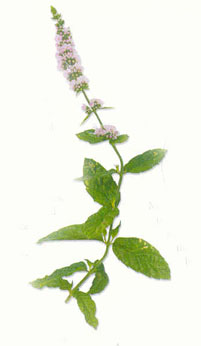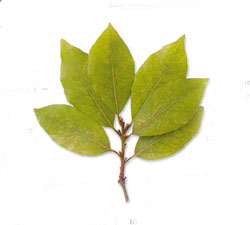
|
|
|
IT WAS WITH BASIL AND MINT THAT GOD BEDECKED THE WORLD Mentha piperita Mentha spicata Mentha silvestris Mentha viridis Mentha pulegium This herb proliferates and interbreeds so easily that one can come across more than 20 different species with only insignificant differences among them, but all share the quality of emitting an intoxicating aroma.
MYTHOLOGY – HISTORY As Persephone was taking a stroll along the banks of river Acheron (in Greek and Roman mythology the river of woe), she stumbled upon her husband, Pluto, and his lover, young nymph Minthe. In a fit of rage Persephone turned Minthe into a lowly plant with mauve tiny flowers, completely inconspicuous to human eyes. Pluto felt sorry for Minthe and endowed her with a divine fragrance. Since then, this lowly herb has been honoured profusely by gastrononers all over the world. The ancient Greeks believed that mint could invigorate the mind and refresh the blood. They also used it as a remedy for headaches. In fact, after nights of heavy drinking, ancient Greeks would place a wreath of mint on their heads to “exorcise” an impending hangover. The Romans loved the smell of mint and had found ample culinary uses for it. They even scented their bathing water with this fine aromatic herb. Mint is also one of the ingredients for a sauce recipe by famous ancient Roman cook Atticius. This recipe consisted of the herb of grace (rue), mint, coriander, fennel, pepper, lovage, honey and some olive oil. POPULAR MEDICINE Mint is considered an excellent tonic, antispasmodic and stomach comforter. It invigorates the function of liver and bile. Steam baths in menthol, mint’s volatile oil, are quite invigorating, antiseptic and disinfectant. A teaspoon of honey in lukewarm fresh mint tea can check tummy aches/distension and stomach ulcers. It also checks the vomiting of women at gestation periods and motion sickness.
LAUREL DEDICATED TO APOLLO
Author: Myrsini Lambraki Copyright: Myrsini Lambraki, Raftopoulou St. 31, 71305 Heraklion, Crete Tel. and Fax: +30 2810 210052 & 2810 346554 Mobile Phone: 6945 468190 E-mail: mirsini@her.forthnet.gr Website: http: http://users.forthnet.gr/her/myrsini Photographs: Panagiotis Beltzinitis, Myrsini Lambraki, Douwe Hoogstins Translations: George Trialonis, Tel: +30-81-341832 ISBN: 960-91513-4-5 Back to HCS Home Page |
|



